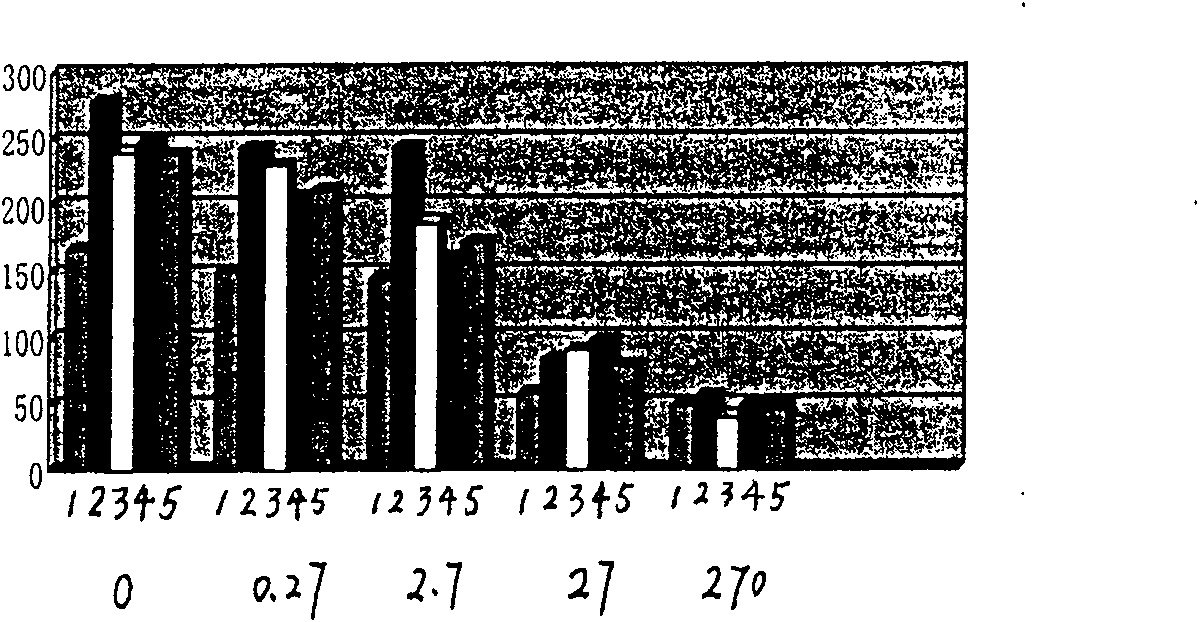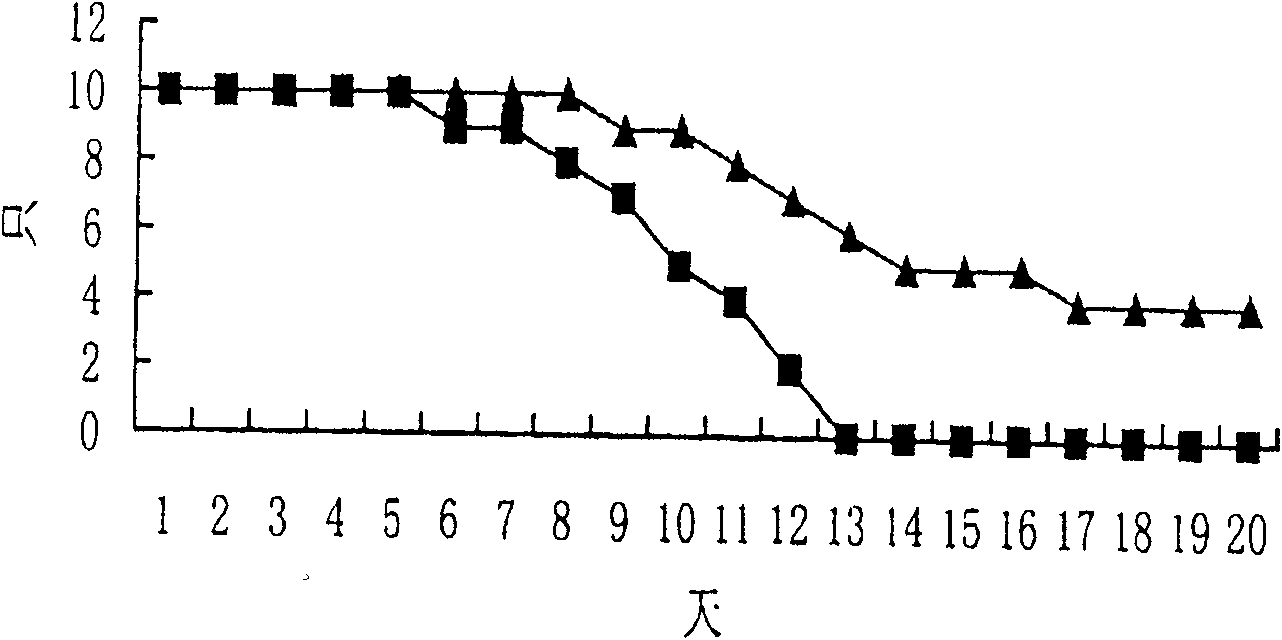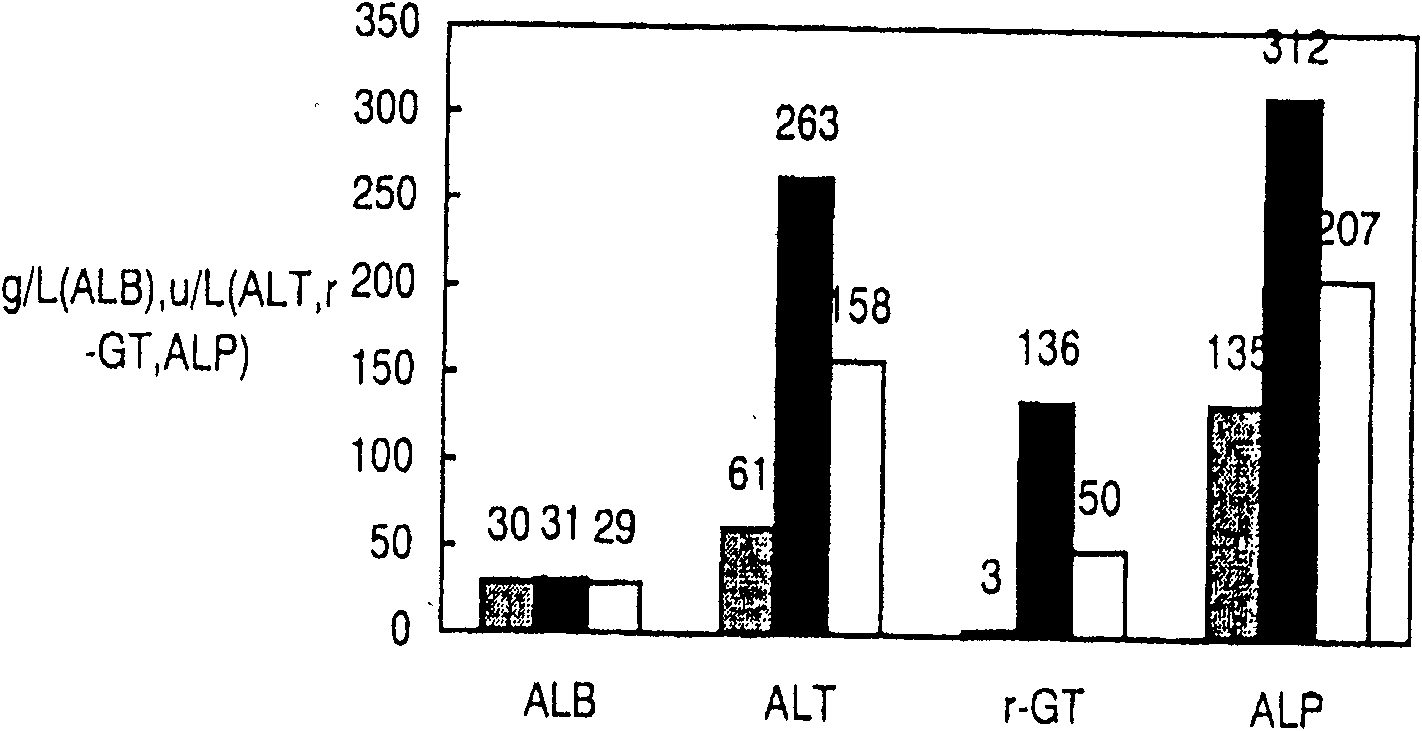Application of salvianolic acid B to preparation of medicament for treating tumor
A tumor drug, salvianolic acid technology, applied in the field of medicine, can solve problems such as limited curative effect, high recurrence rate, and weak drug resistance sensitivity
- Summary
- Abstract
- Description
- Claims
- Application Information
AI Technical Summary
Problems solved by technology
Method used
Image
Examples
Embodiment 1
[0016] Extraction method of salvia miltiorrhiza
[0017] Salvia miltionrrhiza Bge. is crushed into 100-mesh powder after removing impurities such as silt, heated and extracted three times with water, combined with water extracts, concentrated under reduced pressure, and added alcohol (methanol, ethanol) to the concentrated solution to 70-80% alcohol content , let cool overnight; remove the precipitate with a centrifuge, remove the alcohol from the solution, pass through a macroporous resin (type DiaionHP20 or 400-1), elute with water and ethanol, collect the phenolic acidic part, concentrate to a small volume, and then pass through the gel column (MCI gel, TSK HF40w, Sephadex LH-20, Silica gel ODSG3, etc.), eluted with water-ethanol, and collected the eluate containing part B of salvianolic acid. The eluate was evaporated in vacuum to remove ethanol, and freeze-dried to obtain salvianolic acid B dry powder.
Embodiment 2
[0019] Dose-effect relationship graph of salvianolic acid B inhibiting tumor cell growth
[0020] Human liver cancer cell lines SK-Hepl, Huh 7, SMMU-7721, mouse liver cancer cell line H22, and human cervical cancer cell line Hela were selected for experiments (except Hela cell lines were purchased from the Cell Bank of Shanghai Institute of Cell Biology, Chinese Academy of Sciences, The above cell lines were all donated by Reid Institute for Liver Diseases). The above cells were cultured with RPMI-1640 (purchased from Sigma) medium containing 10% calf serum, and the monolayer cells were digested with 0.25% trypsin (purchased from Sigma) to prepare cell suspension, and the cell concentration was adjusted to 1 ×10 5 / ml. Take a 96-well culture plate, add 100ul of cell suspension to each well, and culture overnight to make the cells adhere to the wall. Aspirate the culture solution, add the culture solution containing salvianolic acid B, the final concentration of salvianolic ...
Embodiment 3
[0022] Therapeutic effect of salvianolic acid B on inoculated tumors in animals
[0023] Take 20 C57 mice (both male and female, body weight 18-22g, purchased from Shanghai Experimental Animal Center), each mouse was subcutaneously inoculated with Hep1-6 liver cancer cells at a concentration of 1×107 / ml; 16 days later, the mice grew Tumors 1-2 cm in diameter emerged. At this time, the mice were divided into two groups, namely a control group and a treatment group, with 10 mice in each group. From the 17th day, mice in the treatment group were injected intraperitoneally with salvianolic acid B solution, once a day, and the dose was 100 mg / kg (the concentration of salvianolic acid B solution was 5 mg / ml, prepared with normal saline); An equal volume of normal saline was injected once as a control. Such as figure 2 As shown, the results showed that the survival time of mice in the treatment group was prolonged.
PUM
 Login to View More
Login to View More Abstract
Description
Claims
Application Information
 Login to View More
Login to View More - R&D
- Intellectual Property
- Life Sciences
- Materials
- Tech Scout
- Unparalleled Data Quality
- Higher Quality Content
- 60% Fewer Hallucinations
Browse by: Latest US Patents, China's latest patents, Technical Efficacy Thesaurus, Application Domain, Technology Topic, Popular Technical Reports.
© 2025 PatSnap. All rights reserved.Legal|Privacy policy|Modern Slavery Act Transparency Statement|Sitemap|About US| Contact US: help@patsnap.com



